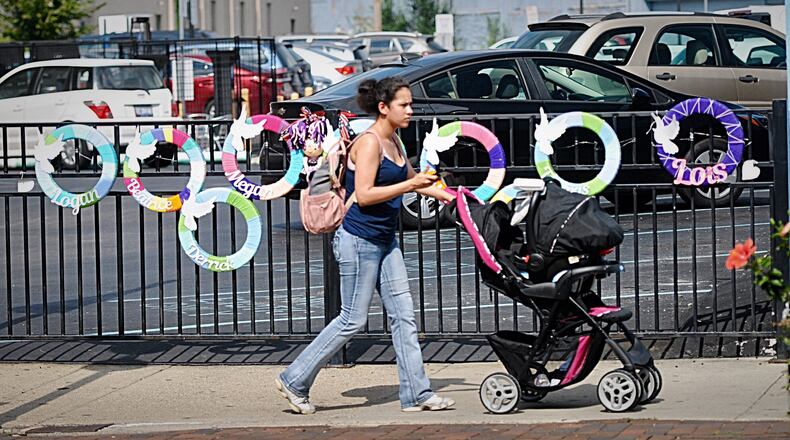“I really still can’t talk about it without crying most days,” Natalie Skilliter, treasurer of the Oregon District Business Association and co-owner of the Corner Kitchen restaurant, said last month. “So what everyone says, and what we know has some truth, is that time helps heal, but we’re still not healed. Everybody wants to feel better, but every time they hear fireworks or sirens or see flashing lights, it traumatizes you, and it’s hard to understand, unless you’ve experienced it, how long the trauma stays with you.”
Related: Walking path of Memorial Day tornadoes shows devastation
Trauma affects people differently, so the healing process could last a long time, said Ann Stevens, spokeswoman for the Montgomery County Alcohol, Drug Addiction and Mental Health Services. Her agency has taken steps to help people affected by both the Memorial Day tornadoes and the Oregon District mass shooting in which nine people were killed and 27 injured.
In September, ADAMHS launched the website DaytonHeals.org. It has information about counseling services, where to get crisis help, mental health providers, substance abuse providers, crime victim services and disaster assistance. The site also lists area mental health service providers with which Montgomery County made arrangement to specifically help people affected by two major tragic events this summer, Stevens said.
The county's primary goal is to assist people deal with the trauma, therefore, the lack of money should not deter anyone who needs help, she said. Some of the mental health providers they have the agreement with charges patients who don't have health insurance on a sliding skill, Stevens said. In addition to the website, ADAMHS recently created the free app GetHelpNow Mongtomery County that instantly connects users to local mental and drug addiction service providers, she said.
“This is an ongoing thing that’s going to last indefinitely,” Stevens said. “It could be a year from now until someone says, ‘I need help.’ There’s been a lot of activity following the shooting, and now that things are settling down and as time goes on, people are going to process it in their own time.”
She encourages victims of any tragedy to talk to a professional, friends or someone you trust. In addition, listen to music, re-establish your routines and “know that it’s OK to celebrate some of your successes in your life.”
Deadline for victims
Victims who were physically injured and the families or representatives of victims who died in the mass shooting have until 6 p.m. today to apply for a financial gift from the Dayton Oregon District Tragedy Fund.
Applications are available online at www.daytonfoundation.org/OregonDistributions or by email to tragedyfund@daytonfoundation.org.
RELATED: Oregon District Tragedy Fund: 'There's no right and wrong answer'
Completed applications, including required documentation, must be returned to the Dayton Foundation, 1401 S. Main St., Suite 100, Dayton, 45409.
Those killed in the shooting were: Derrick Fudge, 57; Lois Oglesby, 27; Saeed Saleh, 38; Logan Turner, 30; Nicholas Cumer, 25; Thomas McNichols, 25; Beatrice Warren-Curtis, 36; Monica Brickhouse, 39; and Megan Betts, 22.
The Dayton Foundation is not releasing the number of applications they’ve gotten at this time because it’s influx, said Christine Smith, vice president of marketing. Some applications are incomplete and the like, so the organization has been trying to reach out to the applicants to fix the problems before there’s a final count, she said.
According to a protocol devised by a volunteer committee, family members or personal representatives of those killed Aug. 4 will be eligible to share equal amounts of 70 percent of the overall fund balance — about $233,000 per victim’s family.
MORE: Fuyao's lawyers want lawsuit settlement kept under wraps
Those who were physically injured and required hospitalization for 48 hours or more will divide up 20 percent of the fund balance, with amounts granted according to duration of hospitalization.
Those who were physically injured and released from a hospital or by a private physician or licensed clinician within 48 hours of the tragedy will divide 10 percent of the fund balance, with applicants divided according to victims who suffered gunshot wounds and victims who suffered other injuries.
Visit www.daytonfoundation.org for more information, to submit an application for the fund.
Dayton Daily News reporter Katie Wedell contributed to this report.
HOW TO APPLY FOR THE OREGON DISTRICT TRAGEDY FUND
Applications are available online at www.daytonfoundation.org/OregonDistributions or by email to tragedyfund@daytonfoundation.org.

